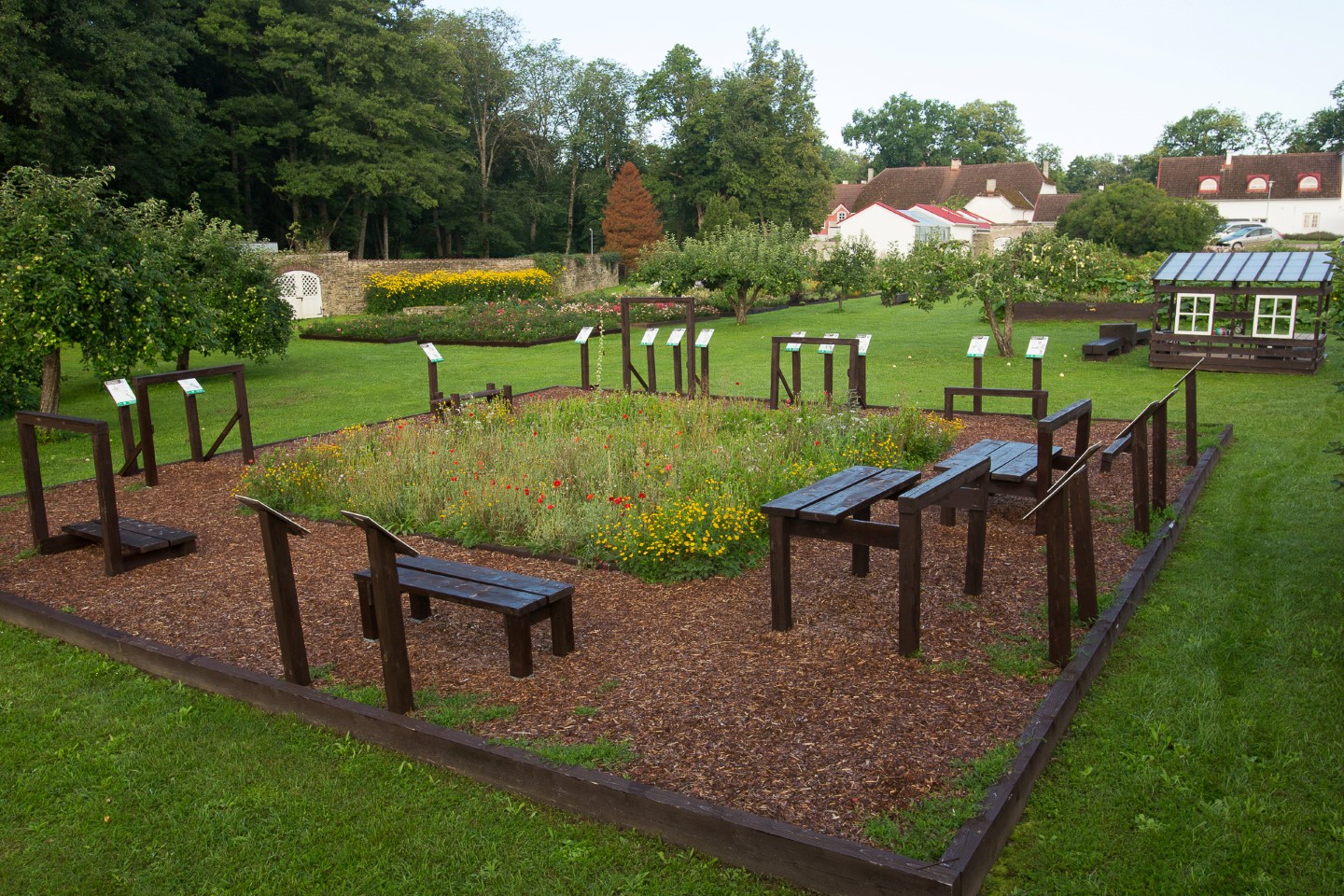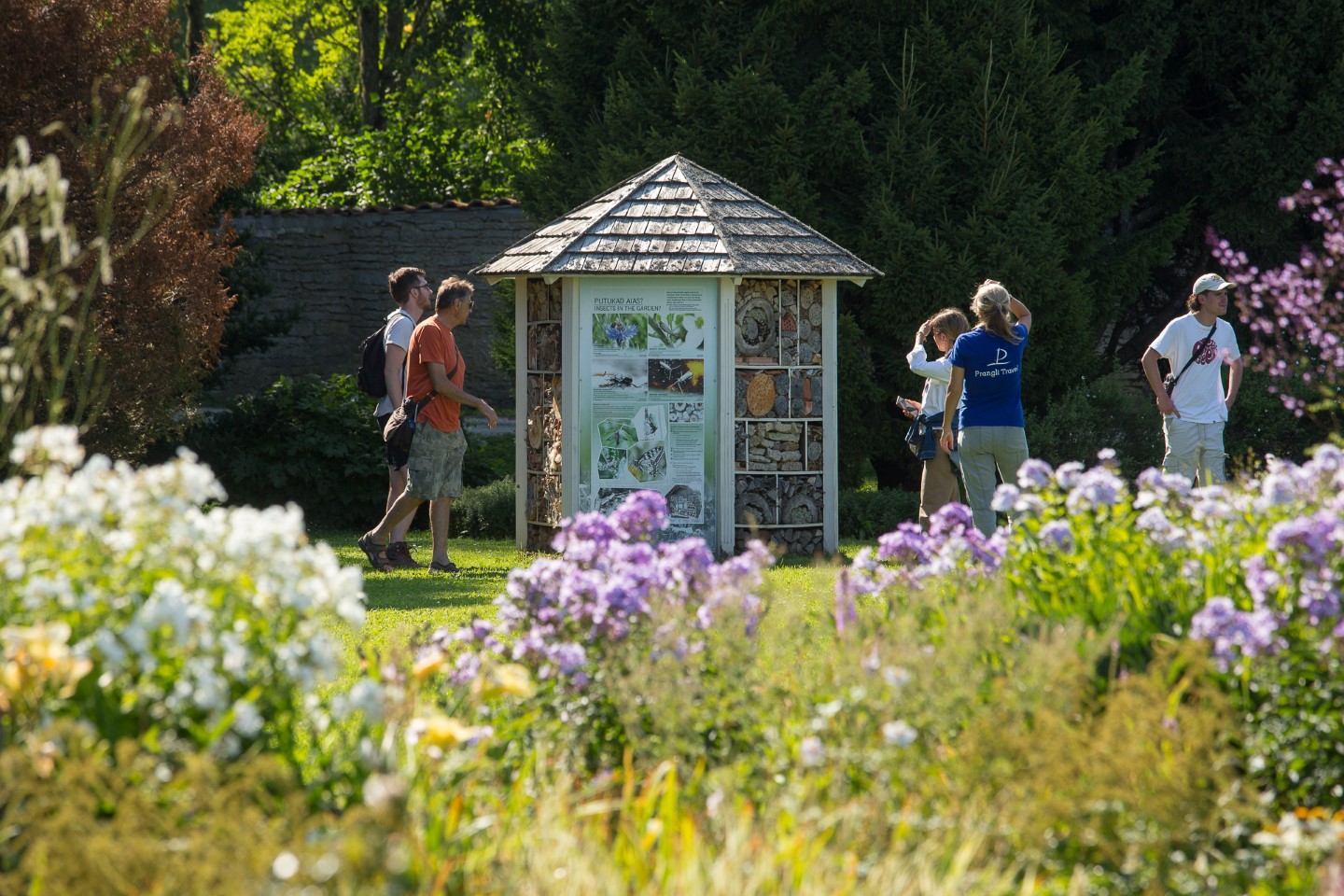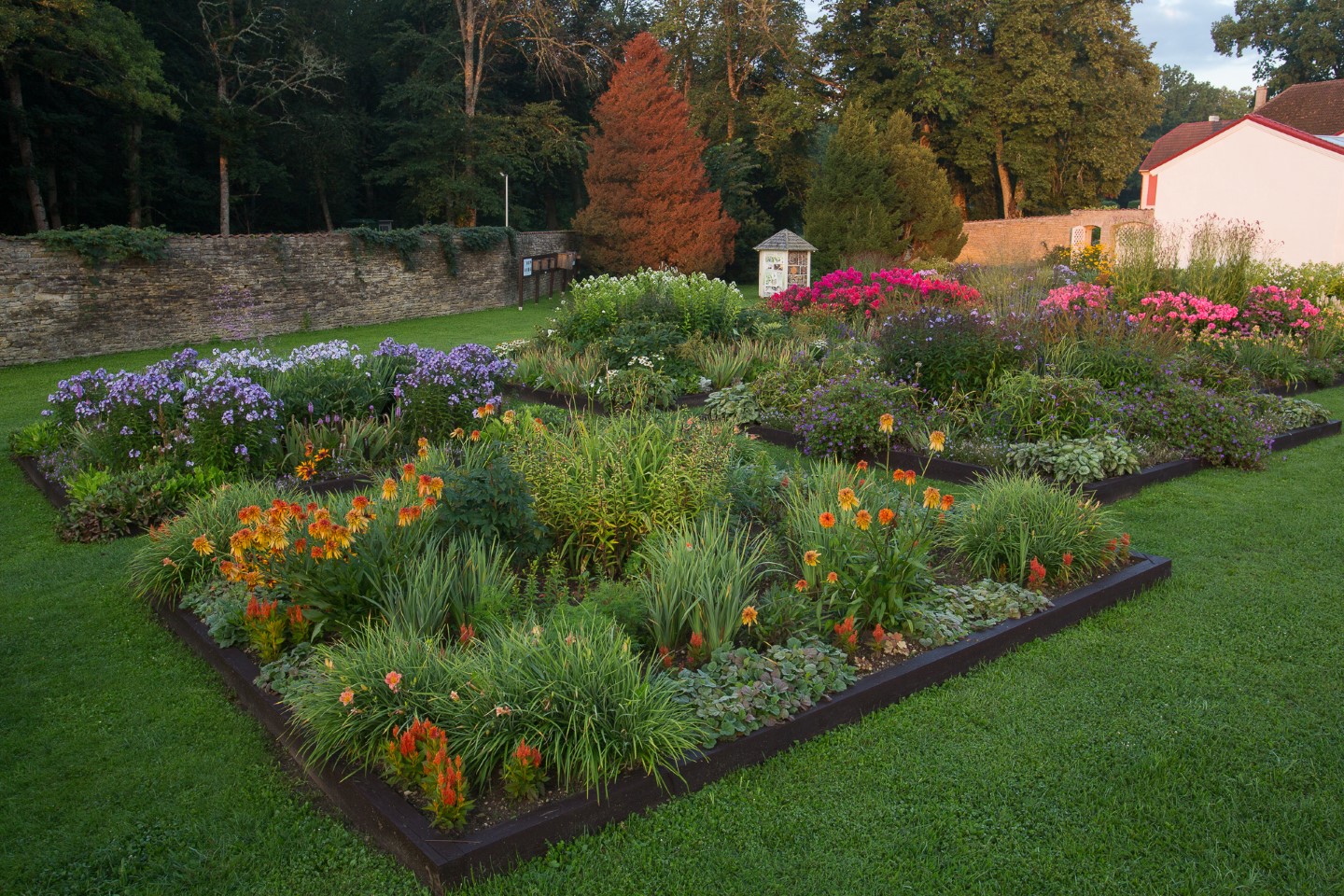Outdoor area
Sagadi Manor is surrounded by grand primeval trees that provide pleasant shade, both during the day and in the evening hours. The park area is shaped into a manor-like whole by the pond, manor garden, greenhouse, and activity area that offer beauty and discovery.
Park
The oldest part of Sagadi Manor’s park was built in the 17th century, from which a small Baroque garden-park was designed in the middle of the 18th century. This venture was led by Marta Eleonora von Manteuffel, the wife of Baron Johan Ernst von Fock, a great nature lover and beauty lover. A front square and a rich ornamental garden were built in front of the main building and a pond behind the main building. The former Baroque-style park is still reminiscent of the old powerful oaks on the shores of the pond.
In 1795, the Baroque garden was transformed into a freestyle English park. Lindens and a hedge were planted in front of the main building, the pond was deepened at the back. The last reorganisations of the park during the manor era were made in 1894, when a magnificent tree-rich park ensemble was established, which turned into a natural park forest on the east side. A complex road network with many pavilions and bridges was built there.
The maintenance of the park was abandoned at the end of the manor era. It was not until 1979 that the plan for the reconstruction of the park was completed, which was largely completed by 1987, when the orchard on the eastern side was restored.
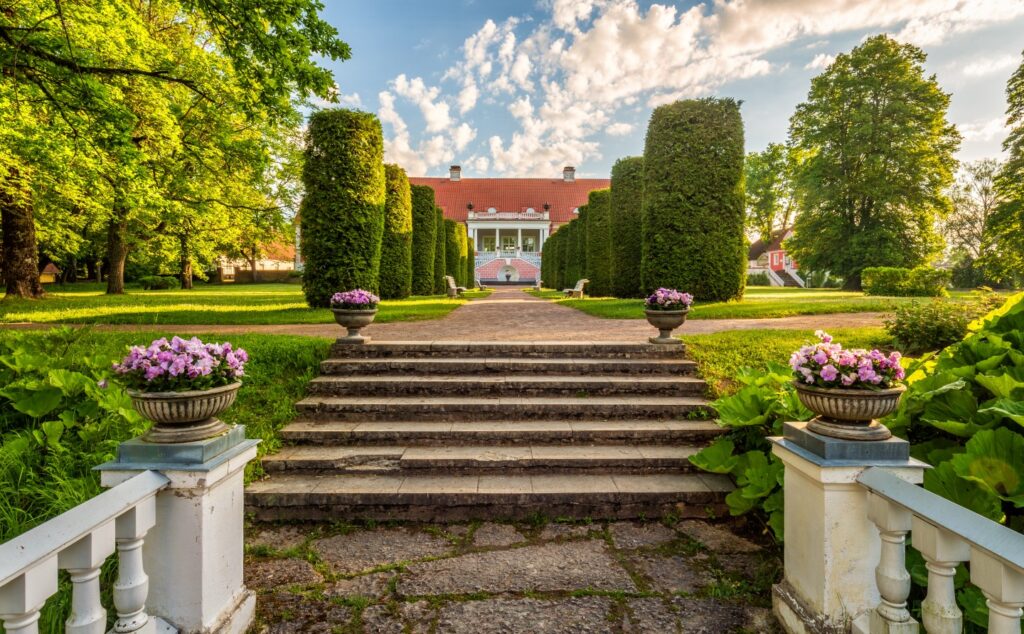
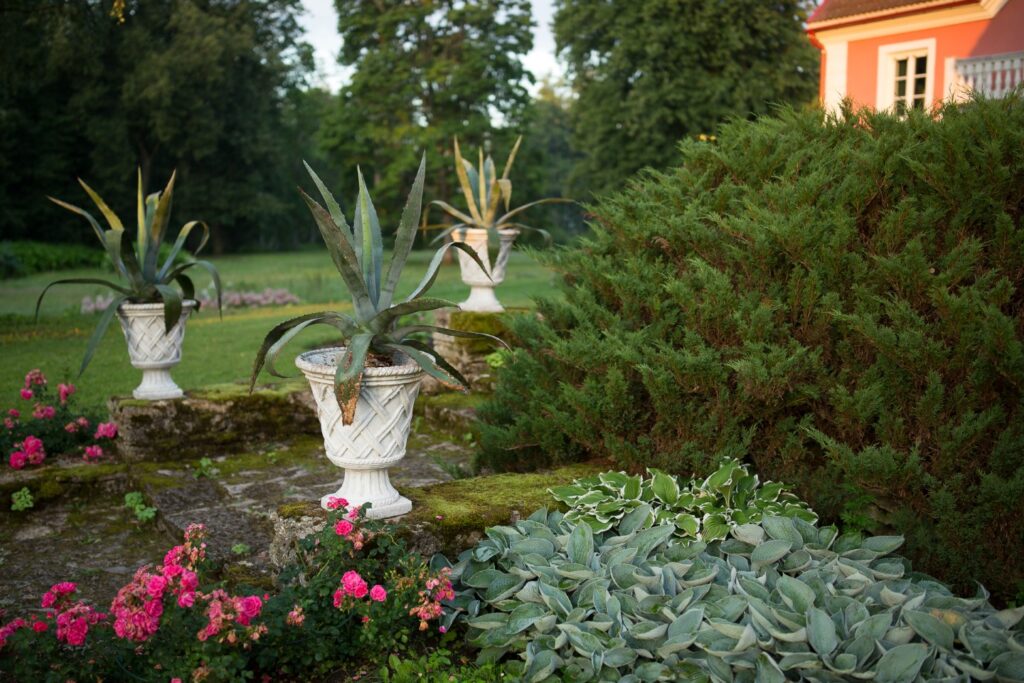
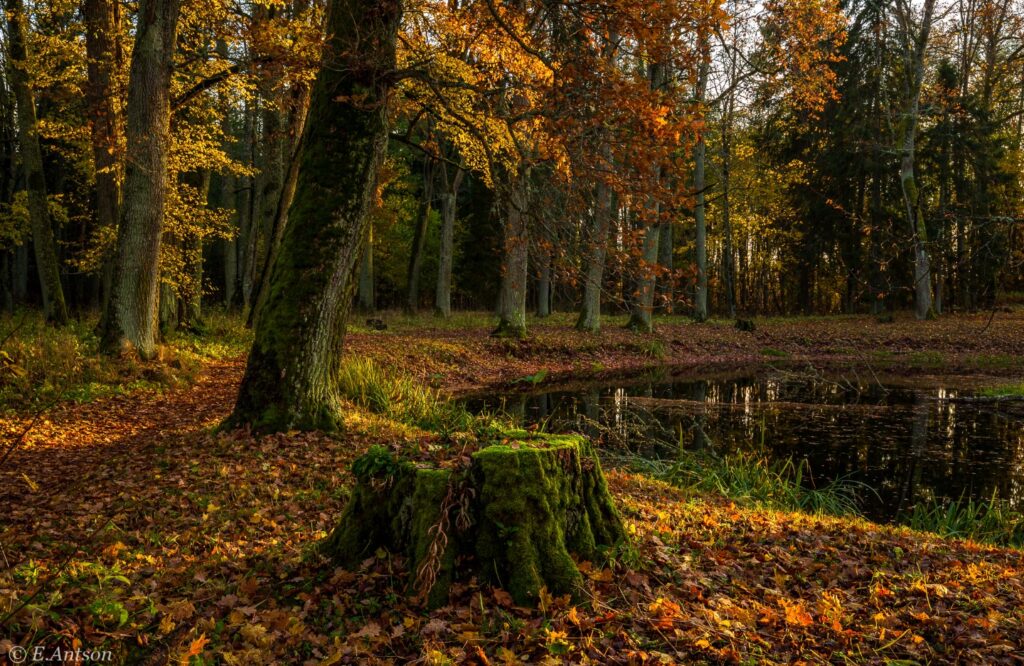
Manor garden
More than 150 apple, pear, plum, and cherry trees are growing in the orchard on the eastern side of the manor complex, between the protective stone walls. The manor grows plants, herbs, and edible flowers for use in its restaurant.
Flower beds, each of which has flowers of different shades, offer a beautiful sight for the eyes. Flowers growing in the garden are used to decorate the manor mansion and other representative rooms. Labels with their names in Estonian and Latin have been added to the flower beds.
Sagadi manor’s rose garden was famous in the surrounding area already a hundred years ago. Numerous rose beds have been established throughout the manor complex and stem roses are brought to the yard in pots for the summer period – the number of varieties reaches almost a hundred!
In addition to enjoying the beauty of plants and flowers, Sagadi Manor Park offers a variety of seating and recreation areas where visitors can relax, read a book or simply stay in the fresh air and enjoy the beautiful surroundings.
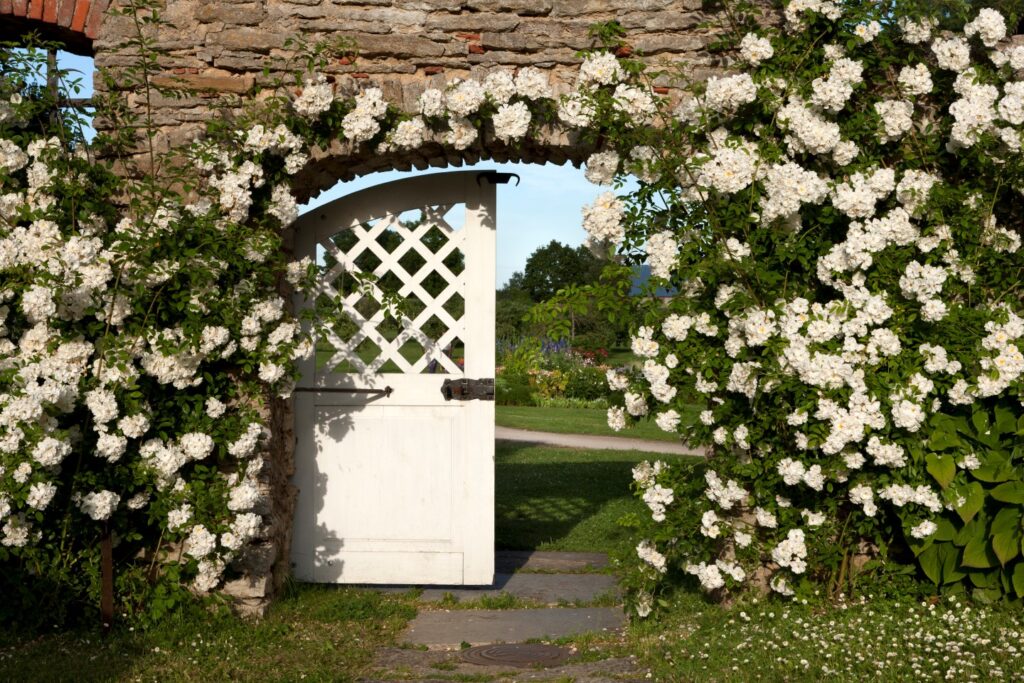
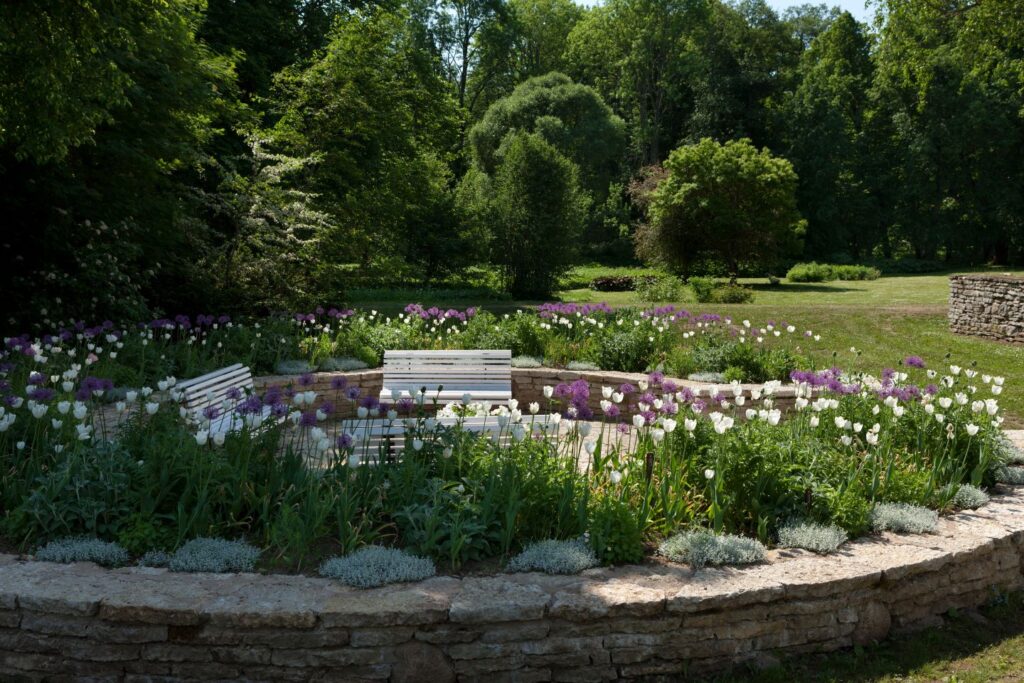
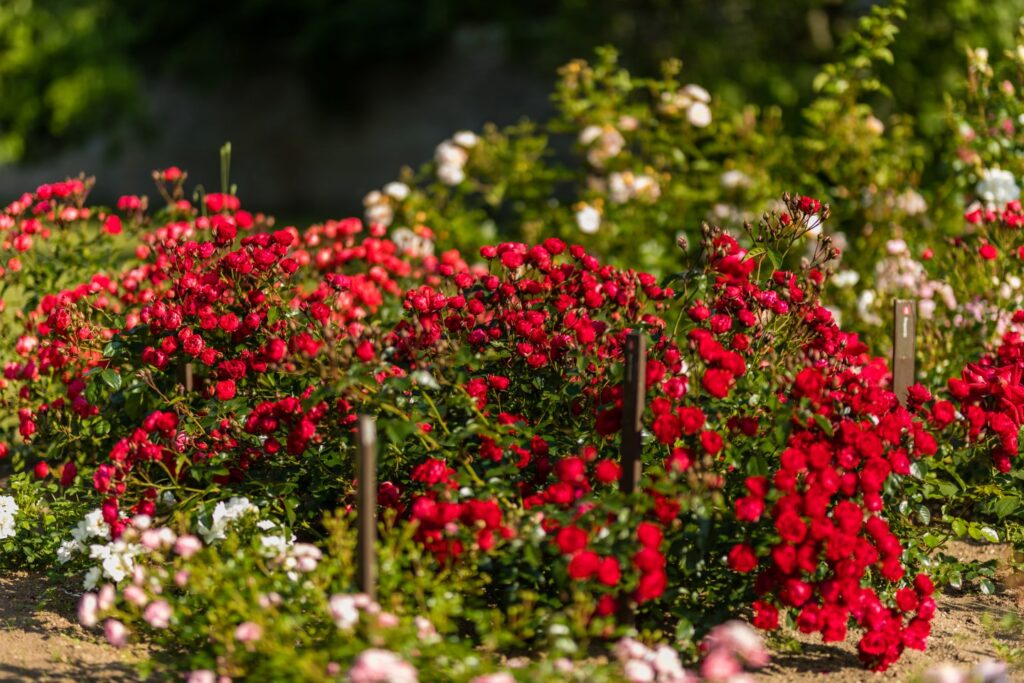
Arboretum
In 1985, a 5.1 hectare arboretum was created on the western side of the manor complex. Foreign tree and shrub species are planted in the arboretum by families. All species are marked with names, and information stands are helpful for those interested. In total, more than 120 species have been planted in the arboretum.
Conservatory
The conservatory was already present in Sagadi at the beginning of the 18th century. The current winter garden on the eastern side of the complex was completed in 1861. Sagadi Manor’s winter garden is decorated with species-rich vegetation of Chinese and Japanese origin, highlighting the connections of Sagadi’s most famous baron, Paul Alexander von Fock, with these countries. The winter garden also includes Japanese style furniture that is in harmony with the plants. Like the manor house, the conservatory is a place for growing plants, summer flowers gather their strength in winter and southern fruit trees grow here. During the winter season, visits to the winter garden are available by prior arrangement.
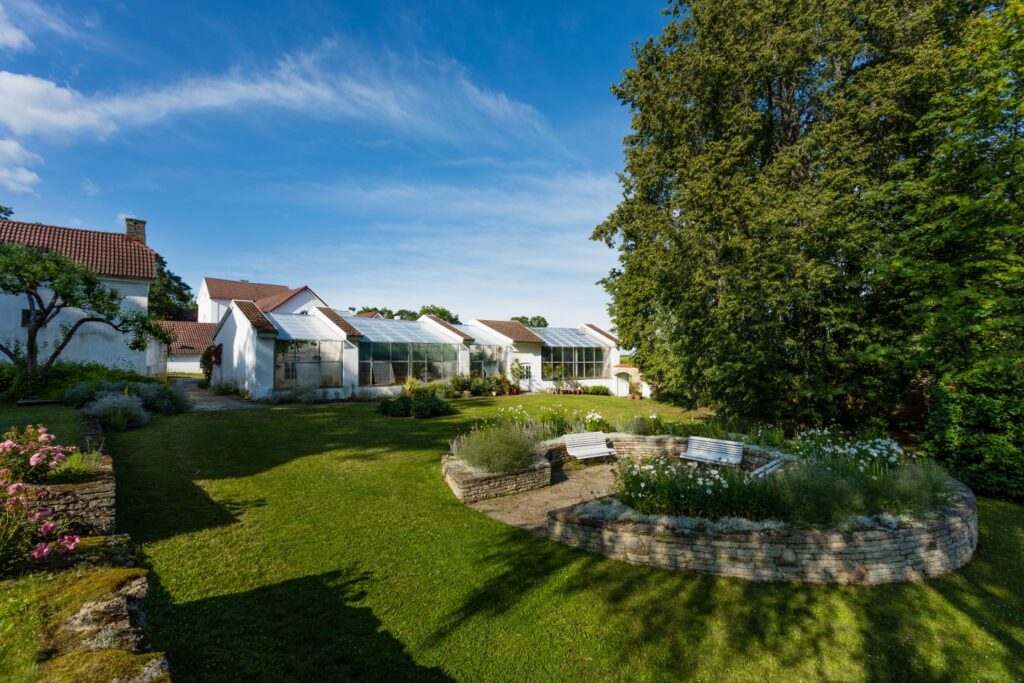
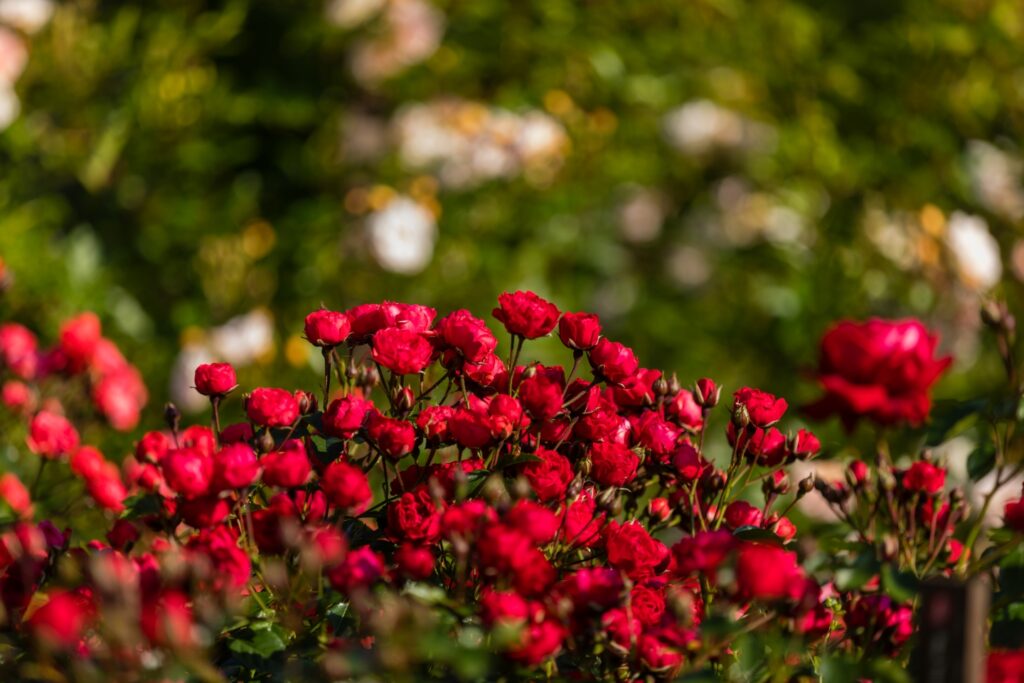
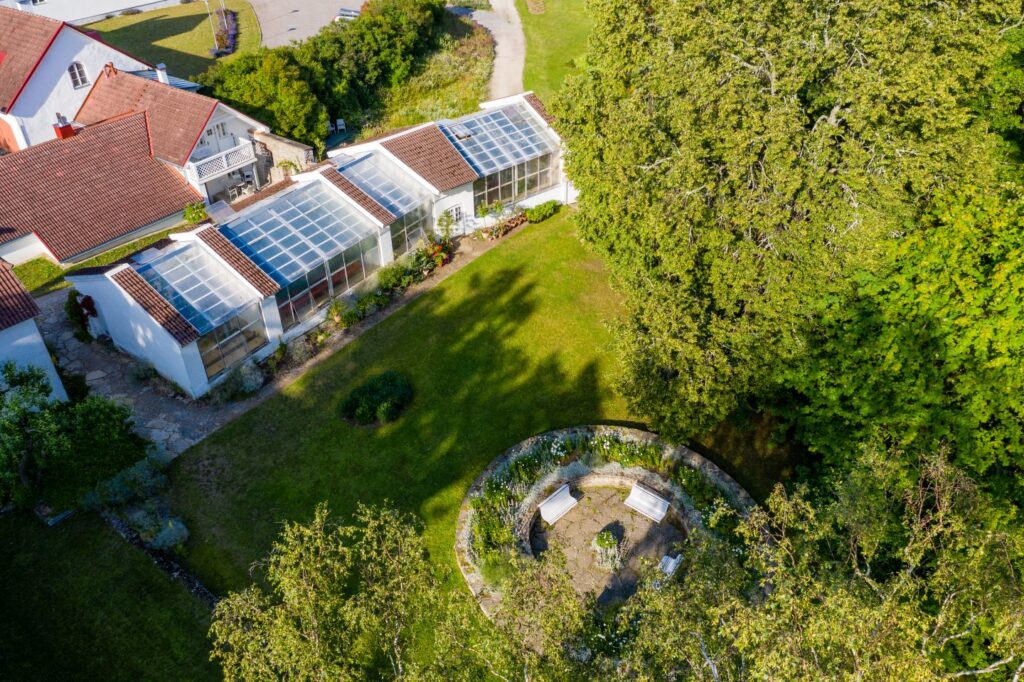
Activity area
The activity area in the manor garden has activities for both small and large.
The outdoor kitchen and sandbox are an exciting place for children to test their dexterity and creativity. There’s also a swing.
The outdoor training area is suitable for use at any age. When performing exercises, the fox and the hare on the information board are ready to help you, recommending various strength and stretching exercises.
The insect hotel provides a habitat for many insect species and introduces the importance of insects in the ecosystem. Here one can closely observe the activities of, for example, bees, bumblebees, butterflies, and beetles.
